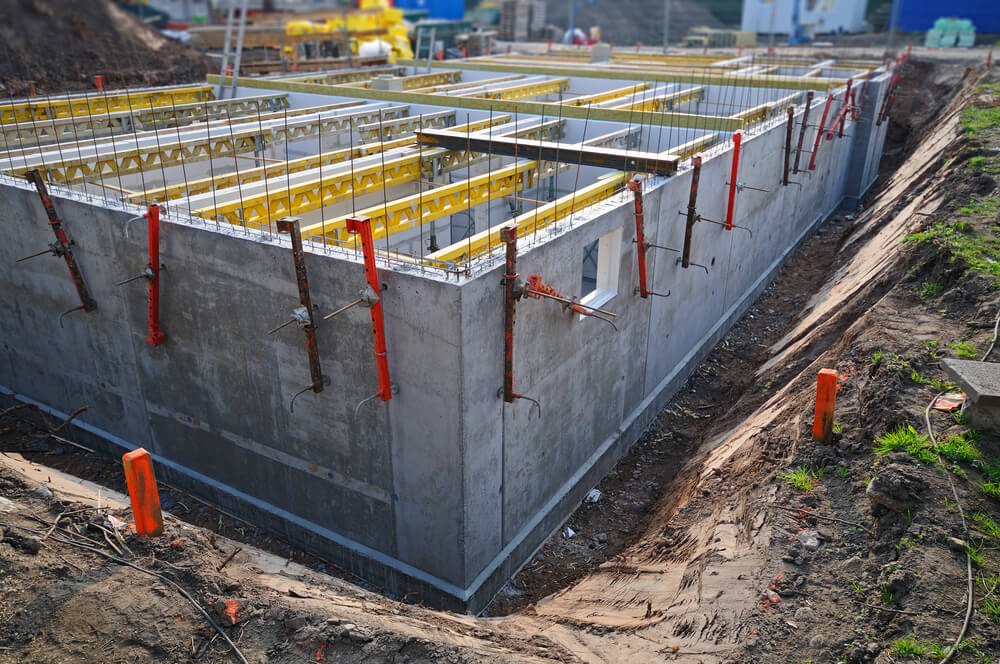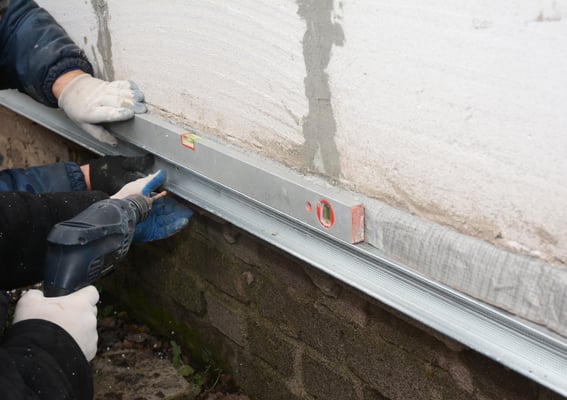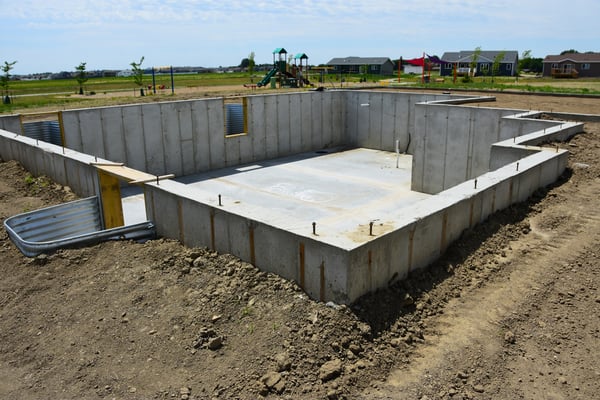Below Grade Systems: Foundation Walls

A foundation wall for a building can be a cast-in-place concrete retaining wall, or a structural wall complete with load bearing pilasters. The most common materials used for this purpose are concrete and reinforced masonry.
Foundation walls accomplish two main functions: structural support and environmental control. However, they may also contain some components of mechanical, electrical and plumbing systems (MEP). There are also aesthetic considerations when designing foundation walls, since some parts of them may be exposed to the public.
Optimize the design of your MEP installations.
Structural Support
Foundation wall systems are designed to support vertical and lateral loads. They are fundamental elements of the building’s structural design, carrying loads from columns and upper floors. These may be considered as distributed or point loads for design purposes, depending on how they act on the foundation wall.
Foundation walls can also serve as a lateral resisting system for buildings. However, an earth retention system may be included to resist lateral loads, leaving the foundation wall with the main function of resisting vertical loads.
- Vertical loads are created by the dead, live and lateral loads from the structure and wall itself.
- Lateral loads on foundation walls come from the soil, surcharge and hydrostatic pressure.
- Geological studies are required when determining soil loads. They are used to determine the soil type, and whether the soil is treated as active or passive.
- Surcharge loads come primarily from live loads on walkways and vehicle roads.
- Hydrostatic pressure may exist in regions with high water tables or flood events.
Environmental Control
Environment loads can be classified as external or internal. External environmental loads include thermal effects, moisture, tree roots, insects, and gas release from the soil. Internal environmental loads include thermal effects and moisture. The performance of the foundation wall will depend on its ability to control these environmental loads.

For foundation walls, moisture usually represents the biggest threat among environmental loads. Moisture controls specified during design may include multiple screens or barriers.
- For example, with surface moisture loads like rain and snow, an upper screen represents the first line of control at the exterior surface.
- This upper screen may consist of a relatively permeable landscape area, impermeable pavers, or another system of intermediate permeability.
- Drainage system components may be designed to direct moisture into an exit drain, located at the base of the foundation wall.
When the water table has a low level, most of the water can be controlled with an upper screen, an exterior drainage system, a near-surface drainage system, and an exit drain. The next design decision is whether to provide waterproofing and dampproofing for the foundation wall surface.
- Dampproofing resists vapor migration, and waterproofing resists both vapor migration and hydrostatic pressure.
- Even with extremely dry soil, most building codes require dampproofing as a minimum, which is applied directly to the exterior surface of the wall.
- In areas with greater moisture loads from hydrostatic pressure or delicate interior environments, a waterproofing membrane should be applied to the exterior wall surface.
Thermal considerations have reduced priority when dealing with the lower portion of foundation walls, since underground temperatures are relatively stable. In most foundation walls, insulation is mainly used to moderate interior temperatures in the upper walls, which are subject to more temperature variations.
Insulation also has an important role preventing condensation on interior faces of the foundation wall. Internal temperature tends to be cooler in below grade areas, due to the insulating effect of backfill soil. Combined with poor air circulation, this factor can result in condensation.
Foundation Wall Finishes

Similar to environmental loads, there are different requirements for internal and external finishes in foundation walls. Finishes for interior spaces will depend on usage - offices, storage, parking, machine rooms, etc. Some common finishes are paint, framed walls (drywall) and stucco. In some cases, the interior finish is simply the exposed surface of the foundation wall, such as concrete or masonry units.
The requirements are different for exterior wall surfaces located near grade level. Proper treatment of this area is critical in terms of aesthetics, but also for durability and performance.
- Dampproofing and waterproofing should be incorporated into the exterior surface, and these features must integrate seamlessly with the building flashing and waterproofing system.
- Many waterproofing membranes require ultraviolet radiation shields to prevent deterioration. An exterior finish is required in these cases.
To further protect this sensitive area and create a proper transition, the exterior facade element (brick, stone, etc) may be carried down just below grade level.
MEP Installations in Foundation Walls
Electrical conduit and piping are some distribution systems that may be incorporated in foundation walls. These systems may run in the interior surface finish system, or within the ceiling space. Distribution systems in foundation walls must be designed carefully and with a high level of detail, since they may become conduits that transport air and moisture within the structure.
Like in any MEP design, Building Information Modeling (BIM) is a powerful tool to optimize the design and prevent clashes between components. When dealing with MEP components that interface with foundation walls, ease of maintenance is a very important design requirement. Otherwise, maintenance tasks for below grade MEP components can be time-consuming and expensive.

Anuj Srivastava
Anuj Srivastava is a principal partner at NY Engineers. He is known for his MEP franchise market knowledge. Anuj is currently leading a team of 100+ MEP/FP engineers and has successfully led over 1500 franchise projects in the US.
Join 15,000+ Fellow Architects and Contractors
Get expert engineering tips straight to your inbox. Subscribe to the NY Engineers Blog below.



